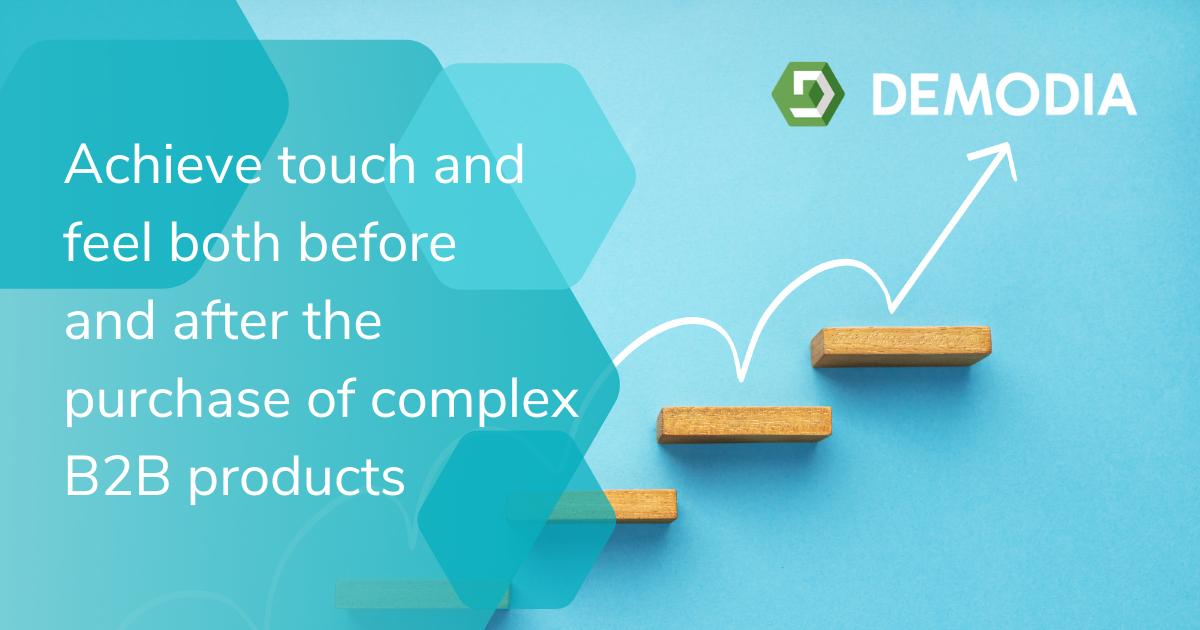How to use demos effectively in the sales and onboarding process

For many SaaS products, demonstrations come late in the sales funnel. This is especially the case for enterprise products that can be complex and expensive. Often, a prospect doesn't get a glimpse of how the product works until the qualification process is already complete. At this point, a sales consultant typically uses the information they have gathered to build a demonstration that illustrates the solution to the customer's problems as accurately as possible. For this reason, product demos have traditionally only been a tool for when the qualification process has already been completed.
As we move into a world with Millennial buyers, this approach no longer suits. Younger generations have grown up with the ability to play around with a product and explore the possibilities before they commit their time. They want to make up their own minds before dealing with a sales representative. This generation of buyers has been conditioned to the "try before you buy" experience. Taking a journey of discovery right at the beginning of a sales funnel is standard practice for them.
Software companies that offer complex products, for example, Salesforce, OpenText , HubSpot or SAP, are faced with the following problem: on one hand, they need to illustrate the capabilities of their product adequately. And on the other hand, they need to satisfy the expectations of a generation that first wants to “play” with the product before making a purchase decision.
But how can complex software be presented in this self-managed demonstration way?
The customer wants to take over the cockpit
The first question a vendor must ask: How quickly and easily can customer-specific requirements be clustered and made reproducible for as many interested parties as possible?
One approach to this is to create click-tour demonstrations. These are demonstrations similar to those that a sales rep would show, but with one key difference: the customer runs the show. They decide when to move from one step to the next. Instead of passively listening to a demonstration, the customer takes over the cockpit. This switch in roles not only saved them time but also meant that prospects were more attentive.
One approach to this is to use something like InVision prototypes. Using this approach, it is possible to create demonstrations that function like an interactive PowerPoint presentation. Screenshots of a product can be hyperlinked to move from one view of the product to the next.
HTML-based demonstrations offer more flexibility
Taking this approach one stage further. Fully interactive demos can be created using tools such as Walnut.io. In Walnut, screenshots are replaced by your application’s HTML.
What’s the advantage of this?
A screenshot is nothing more than a photo of a product. So if any detail should change, you have to edit the photos/screenshots as a whole.
In contrast, when the HTML code is captured:
- text elements can be changed at any time
- customer, file or other names can be swapped to something appropriate to the prospect
- captured pages can be made clearer, for example, by hiding or renaming test items
- logos can be updated to reflect the current prospect.
Because it is easier to make adjustments to the demo, the prospective customer becomes the main character in a personalised individual story. Depending on whether an HR or IT employee clicks through the demo, personalisation can include adjusting the demo flow, changing the language used or even including extra feature details.
With tools like Walnut, prospects feel like they are being guided through the product, always choosing their own next step. Click-tours also allow you to illustrate integrations between different applications. Depending on the phase of the sales funnel, additional demo trails can be added so that prospective customers can get to know further use-cases for the software. The use of tailored demos at each stage of the sales funnel gives companies a competitive advantage, saves costs and satisfies the expectations of their prospects.
Demos, unlike trials, have the advantage of allowing simulation in a real-world application, because in trials, it is usually not possible to explore the full range of a product due to a lack of data.
Demos for the onboarding process
After producing numerous demos, cataloguing them, and making them available to their team, many companies quickly realise how useful these demos are for the onboarding process too. Using demo’s as part of the onboarding process allows companies to avoid buyer frustration, as is often the case with complex software solutions. Buyers can get an accurate picture of how the software works through the demos without having to fully setup their own environment first. With Walnut's analytics, companies are also able to see what part of the demo buyers are looking at and which parts might need additional demonstrations or fewer.
The more interactivity a demo offers, the higher the success rate. Touch and feel is the key to success. The time of passive consumption is definitely over.
Demodia has been advising customers on the use of demo videos for years and has experience in applying tools. We would be happy to support you too in making your onboarding process more cost-effective, faster and more comprehensive with demos. Make an appointment here today and explain your problem to us. We will find a solution for you.

